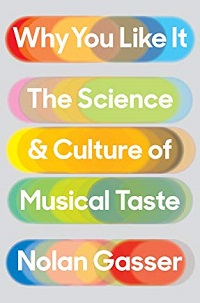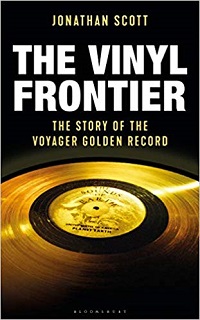The Science of Music | Performing Arts, May 2019
For anyone curious about why their favorite songs strike a chord with them; a must for all libraries

![]() Gasser, Nolan. Why You Like It: The Science and Culture of Musical Taste. Flatiron: Macmillan. Apr. 2019. 720p. notes. index. ISBN 9781250057198. $29.99; ebk. ISBN 9781250057204. MUSIC
Gasser, Nolan. Why You Like It: The Science and Culture of Musical Taste. Flatiron: Macmillan. Apr. 2019. 720p. notes. index. ISBN 9781250057198. $29.99; ebk. ISBN 9781250057204. MUSIC
Why did my Pandora radio station jump from “This Must Be the Place” by the Talking Heads to “All My Friends” by LCD Soundsystem? Gasser, musicologist and the chief architect of Pandora’s Music Genome Project, knows why, and why you’ll like it. In a sprawling tome, he explores how the ingredients of music—sound, melody, rhythm, harmony, and timbre—shape our musical tastes. Gasser suggests that musical taste isn’t just a fleeting predilection but intrinsic to the music itself. The book’s 16 chapters coil around one another, alternating between music and extramusical subjects (sociological, psychological, or cultural aspects of music) to form a double helix structure. Though the author admirably attempts to explicate musical theory, his depth of analysis can sometimes be a challenge for novice readers. Nevertheless, his study of Taylor Swift, Dizzy Gillespie, and Ludwig van Beethoven is so engaging that you will probably hear a “harmonic modulation to the dominant” the next time you listen to “Shake It Off.”
VERDICT A brilliant and passionate work about music’s indelible aesthetic algorithm; for anyone curious about why their favorite songs strike a chord with them. [See Prepub Alert, 10/22/18.]—Joshua Finnell, Colgate Univ., Hamilton, NY

![]() Scott, Jonathan. The Vinyl Frontier: The Story of the Voyager Golden Record. Bloomsbury Sigma. May 2019. 288p. bibliog. index. ISBN 9781472956132. $28; ebk. ISBN 9781472956118. MUSIC
Scott, Jonathan. The Vinyl Frontier: The Story of the Voyager Golden Record. Bloomsbury Sigma. May 2019. 288p. bibliog. index. ISBN 9781472956132. $28; ebk. ISBN 9781472956118. MUSIC
The most intriguing stories are often found in the details, and this is the case for music writer Scott’s engaging and conversational look at the creation of the gold-plated records that are still traveling throughout the universe on the two Voyager probes launched in 1977. The records were intended to bring sounds, music, sentiments of peace, and even pictures to potential alien races, and Carl Sagan and his team delivered a stunningly high-tech LP (one copy of The Sounds of the Earth travels with each probe). Descriptions of the time and intellect devoted to the process of content selection, as well as the ingenious methods of data transfer used for the nonaudio components, are fascinating, but the personal tales behind this “message to the stars” are just as enthralling. Sagan, the leading scientist behind the Voyager recordings, published his own account, Murmurs of the Earth, just after Voyager launched, but Scott has the benefit of a wider range of information and sources and an objective view of the process. This is also a very relatable and human way to approach deep space exploration.
VERDICT A must for all libraries.—Peter Thornell, Hingham P.L., MA
ALREADY A SUBSCRIBER? LOG IN
We are currently offering this content for free. Sign up now to activate your personal profile, where you can save articles for future viewing









Add Comment :-
Comment Policy:
Comment should not be empty !!!